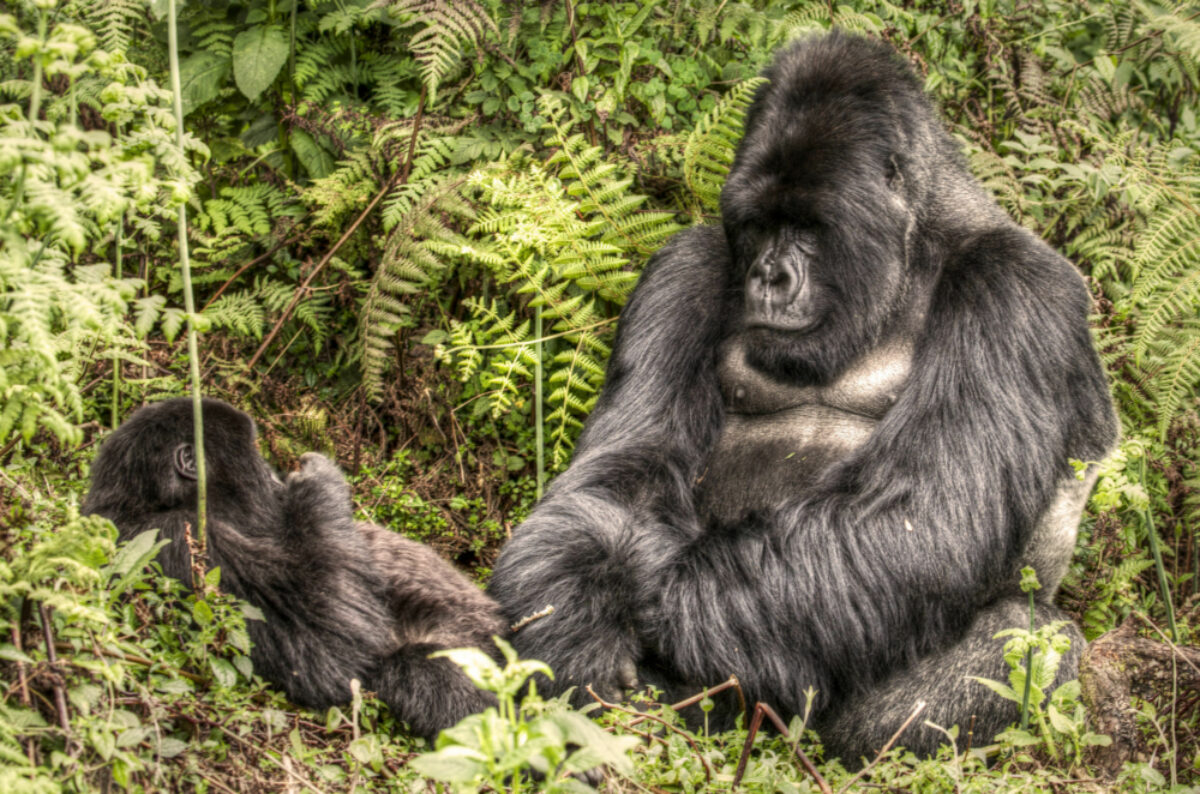One magical hour
Up close with our primate cousins
Kurira was the first silverback I ever saw, the big daddy of the Susa group living on Mount Karisimbi in Rwanda’s Volcanoes National Park. Rules dictate that humans stay seven metres from the gorillas — but no-one had told Kurira. As I backed nervously into brambles, he moved so close I could almost touch him. Crouching by the bush, he studied its fruits for some time as if choosing the best in a box of chocolates. Delicately he plucked off a single blackberry, tiny in hands the size of baseball gloves, and popped it into his mouth, savouring every bit.
In that mesmerising moment, I forgot the gruelling five-hour hike through dense rainforest to reach the gorillas, up and down steep muddy gullies and over paths of fallen bamboo shoots like beds of giant slippery spaghetti underfoot.
The Virunga Mountains, spanning Rwanda, DR Congo and Uganda, are home to half the world’s 880 mountain gorillas, with the remainder living in Bwindi Impenetrable National Park, Uganda. Their survival has been one of Africa’s greatest conservation success stories, yet they remain vulnerable to wars, poaching, disease and deforestation.

Silverback plays with his young in Virguna National Park, Rwanda
Talking with the gorillas
Hence gorilla tracking is carefully regulated. Only eight visitors are allowed to each family and you’re permitted just one hour in their presence once you reach them. But it’s one magical hour: it never fails to amaze me that gorillas are so like us, that there’s this surreal primordial connection with our primate cousins.
Guides talk to gorillas in a language of grunts and grumbles. While working on the gorilla habituation experience in Bwindi, I was told to make a long, low rumble, meaning contentment in gorilla-speak, to the silverback Rushenya. When he replied, rumbling back, shivers ran down my spine: in that moment, the connection between us felt real.
And gorillas cry, sulk, laugh and smile just like we do. Always multi-tasking, mums chide playful youngsters whilst giving piggybacks or preening their offspring. Others eat constantly, munching crunchy bamboo shoots, nettles and thistles, dribbling green juices down their chins. Hormonal teenagers sulk and slouch while others flirt remorselessly, and cheeky toddlers play peek-a-boo swinging through the trees, fighting and punching their fists in the air.
Byishimo the blackback
But of all the gorillas I’ve encountered, Byishimo is my favourite. I first saw him as a tiny three-month old baby stuck to his mother’s breast with his twin sister Impano on the other. The first twins to survive in fifty years of mountain gorilla conservation, they looked like a fluffy black bikini. Ten years later, I went to find them again.
Impano, with her own baby, stayed away. But Byishimo, now a burly blackback, was breathtakingly beautiful. A true star, he played with babies and rolled in grasses, almost posing for the camera as if he knew he was special. That hour in his company flashed by like seconds, but will stay with me forever.




